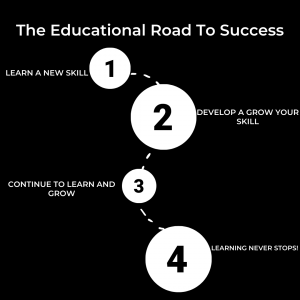The Importance of Creativity in the Classroom: Fostering Innovation and Engagement
Creativity plays a vital role in education, shaping how students interact with the material and with each other. By fostering creativity in the classroom, educators enhance critical thinking, problem-solving skills, and emotional intelligence. These attributes are essential not just for academic success but for personal development and adaptability in an ever-changing world.
Incorporating creative approaches into lessons encourages students to engage deeply with content, leading to a more profound understanding. When students are given the freedom to explore and express their ideas, they are more likely to take ownership of their learning journey. This sense of agency is crucial for building confidence, which translates to greater participation and enthusiasm in the classroom.
Ultimately, developing creativity in the classroom is not merely an educational luxury but a necessity that prepares students for future challenges. As educators recognize the importance of this aspect, they create environments where innovation and imagination thrive, benefitting both students and the broader educational landscape.
Fostering Creativity in Education
Creating an environment that promotes creativity is crucial for effective learning. This involves establishing spaces where innovative thinking can thrive and identifying strategies to enhance problem-solving skills. Teachers play a vital role in this process by nurturing creative thought among their students.
Developing Creative Environments
A creative environment is characterized by flexibility and openness. Classrooms should encourage collaboration, allowing students to express their ideas freely.
Key elements include:
- Flexible seating: Encourages movement and interaction.
- Inspiring decor: Displays student work and creative materials.
- Access to diverse resources: Art supplies, technology tools, and literature stimulate imagination.
When students feel safe and valued, they are more likely to take risks in their learning. This supportive atmosphere helps students explore innovative solutions.
Creative Thinking and Problem-Solving
Encouraging creative thinking involves teaching students how to approach problems from multiple angles. This can be achieved through specific strategies.
Effective approaches include:
- Brainstorming sessions: Generate diverse ideas without criticism.
- Project-based learning: Provides real-world problems to solve collaboratively.
- Mind mapping: Helps students visualize connections between concepts.
These methods enhance students’ problem-solving capabilities, making them more adaptive and resourceful. Creativity leads to deeper understanding and retention of knowledge.
Role of Teachers in Nurturing Creativity
Teachers are essential in fostering creativity by modeling innovative thinking and encouraging experimentation. Effective educators implement strategies that inspire student engagement and exploration.
Important practices involve:
- Encouraging questions: Prompt students to inquire and investigate further.
- Incorporating play: Use games and creative activities to make learning enjoyable.
- Providing constructive feedback: Guide students in refining their ideas without discouraging them.
Through these efforts, teachers empower students to embrace creativity, enabling them to navigate challenges and innovate in their future endeavors.
The Benefits of Creativity in Learning
Creativity plays a crucial role in enhancing various aspects of learning. It contributes to academic growth, fosters social skills, and promotes a sense of independence in students.
Enhancing Academic Achievement
Creative approaches in the classroom lead to improved academic performance. Students engaged in creative tasks tend to retain information better and apply their knowledge more effectively.
Research shows that integrating creativity into curricula stimulates critical thinking and problem-solving skills. This encourages students to explore concepts deeply and develop innovative solutions.
Active learning strategies such as project-based tasks, artistic expression, and collaborative problem solving are essential. These methods challenge students and motivate them to achieve higher standards in their studies.
Improving Social and Emotional Skills
Creativity fosters essential social skills among students. Engaging in collaborative projects promotes teamwork and communication.
Students learn to respect diverse viewpoints, which cultivates empathy and emotional intelligence. Participating in creative activities also allows them to express feelings in a constructive manner.
Additionally, a supportive environment encourages the development of relationships. Students who share ideas are more likely to build connections, increasing their confidence and social competence.
Fostering Independence and Control
Creativity nurtures independence in learning. When students engage in self-directed projects, they gain a sense of ownership over their education.
This freedom to explore personal interests instills confidence, leading to self-motivation and responsibility. Students learn to manage their time and resources effectively, which enhances their organizational skills.
Encouragement of creative expression also allows students to identify their strengths. This process empowers them to take control of their learning journey, making choices that reflect their personal goals and aspirations.
Creative Activities and Their Impact
Creative activities foster essential skills in students, enhancing their cognitive development and emotional well-being. Engaging in these activities promotes imagination, storytelling, and originality, allowing learners to explore concepts in dynamic ways.
Creative Play and Imagination
Creative play encourages children to express themselves through imaginative scenarios. This type of play allows them to navigate different roles and situations, leading to the development of empathy and problem-solving skills.
Through activities like building with blocks or role-playing, children learn to collaborate and communicate. These experiences help refine their social skills, making them more effective in group settings.
Additionally, creative play can stimulate cognitive development. Engaging in imaginative scenarios enhances critical thinking, as children learn to create solutions and adapt to changing circumstances.
Storytelling and Dramatic Play
Storytelling serves as a powerful tool for comprehension and expression. Through narratives, children connect with complex ideas, cultures, and perspectives, enhancing their understanding of the world.
Dramatic play, such as acting out stories, offers a hands-on approach to learning. This method allows students to embody characters and explore emotions, deepening their engagement.
Furthermore, storytelling fosters language development. As children narrate or listen to stories, they expand their vocabulary and improve their communication abilities, which are vital for academic success.
Idea Generation and Originality
Encouraging idea generation cultivates originality in students. Activities such as brainstorming sessions or art projects allow children to explore their thoughts and express unique perspectives.
When students are given the freedom to create, they learn to take risks with their ideas, which can enhance confidence. This autonomy contributes to a positive learning environment, where students feel valued for their contributions.
Moreover, fostering originality promotes innovation. Students engaged in creative tasks often develop the ability to think outside the box, preparing them for real-world challenges. These skills are crucial as they progress into adulthood and face various complexities in their careers.
Creativity Beyond the Classroom
Creativity extends far beyond the classroom, influencing various sectors such as business, industry, and society as a whole. It plays a crucial role in preparing students for future challenges and drives innovation across multiple fields.
Preparing Students for the Business World
Students equipped with creativity are better suited for the fast-paced business environment. They can approach problems with innovative solutions, which is essential in today’s competitive market. Creative thinking fosters adaptability, allowing individuals to navigate changes effectively.
Entrepreneurship thrives on creative ideas. Startups often emerge from innovative concepts that challenge existing norms. Students who engage in creative activities develop skills such as critical thinking, collaboration, and resourcefulness, making them valuable assets in any organization.
Impact on Society and Industry
Creativity significantly impacts society by driving cultural and technological advancements. Innovators in science and technology bring fresh perspectives that lead to groundbreaking discoveries and solutions. This trend encourages interdisciplinary collaboration, as various fields converge to address complex issues.
In industry, creativity enhances productivity and efficiency. Organizations that foster a culture of creativity benefit from improved employee morale and higher retention rates. Furthermore, creativity in industry leads to the development of unique products and services, setting businesses apart from their competitors.


